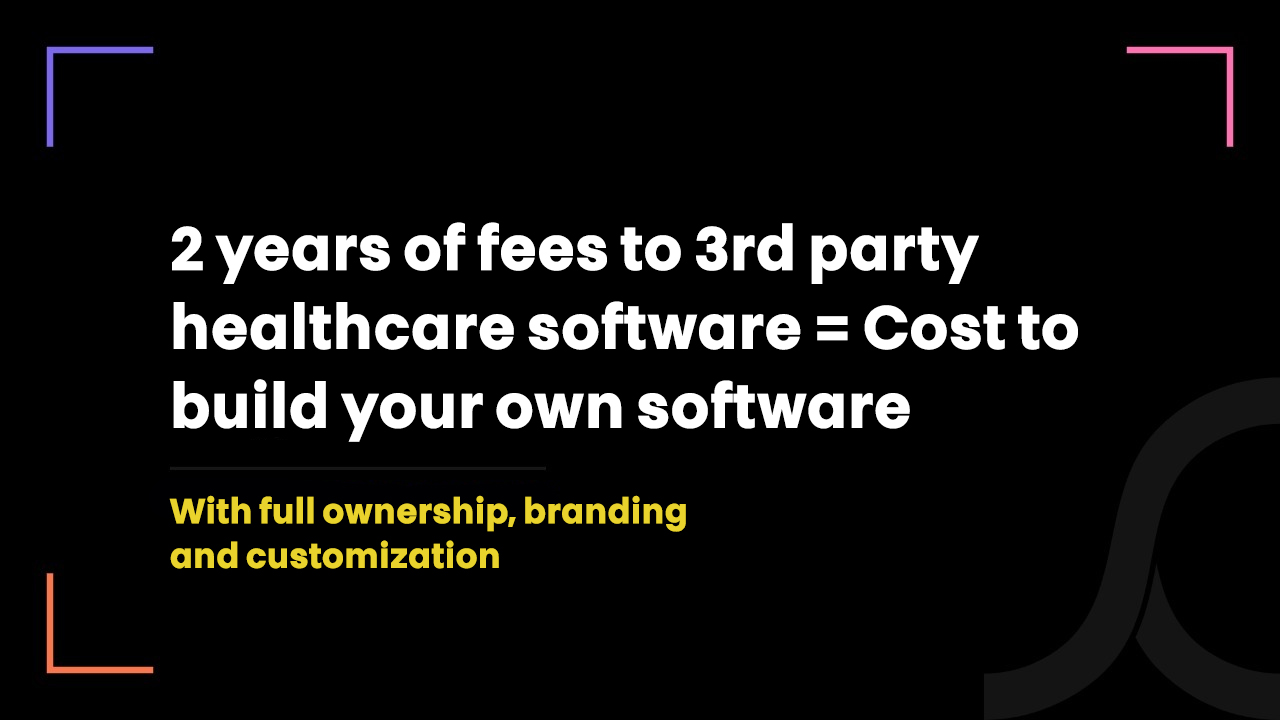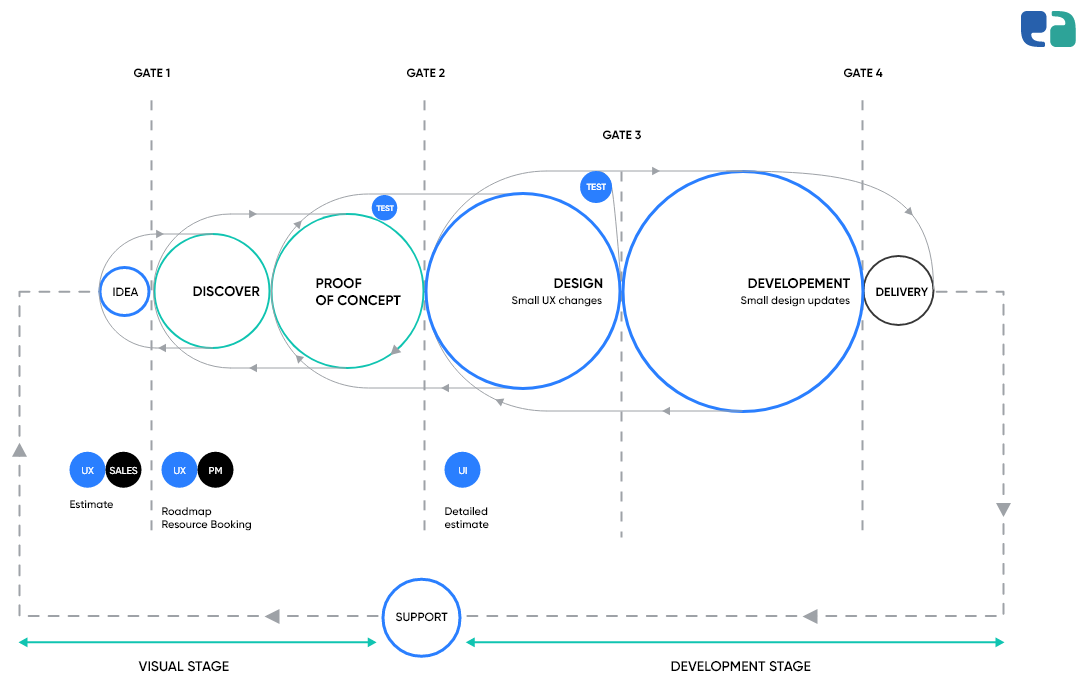UCHealth Used AR in its Mobile App to Enrich Patient Engagement in the True Sense

10 months ago
In 2021, it is difficult to imagine a clinic without a patient engagement solution or clinic booking system.
It assists clinics in delivering a good patient experience by streamlining the entire patient journey - from appointment booking to consultation to follow-up.
But all clinicians find themselves in a dilemma when it comes to choosing between building their own solutions or subscribing to others’ solutions by paying monthly fees!
So, in this blog, we will discuss which is a good choice for you in terms of cost, legality, compliance, patient outcome, and other crucial aspects.
But first, let's see how new forms are coming up in improving patient engagement.
Colorado's Largest Healthcare Ecosystem UCHealth has Integrated AR into its Mobile App to Improve Patient Engagement
Healthcare entities always strive to bring new modes to enhance patient engagement.
UCHealth is a great example of it.
They recently integrated AR (Augmented Reality) into their mHealth app in order to enrich patient engagement in the true sense.
It allows patients to interact with the virtual dogs while they sit in a waiting room.
Here is how it looks.
A patient has to click a button in UCHealth mobile app and it directly opens the device's camera.
It makes a dog virtually come alive in the waiting room.
The fun part here is that patients can pick a dog they want and can name it.
This is the first use case of AR in the UCHealth app. They are looking forward to developing and implementing new approaches for enhancing patient engagement using AR.
Beginning this fall, a patient or visitor of UCHealth will be able to click a button in their UCHealth mobile app and be directed to open their device's camera on a trigger point that will make a dog virtually come alive through AR in the waiting room. pic.twitter.com/9nBXYXhAcp
— New Layer App (@New_Layer_App) August 12, 2022
Your Own Patient Engagement Solution VS 3rd Party Solution Like Cortico
1. Cost
Your own solution:
Developing your own patient engagement solution for your clinic requires a pretty good investment as you need to hire a tech company to build it.
All tech companies charge based on the hours they require to develop your solution.
And development hours depend on the features you wish to add to your solution.
Though the upfront cost is high, there are several ways you can keep it within your reach.
For instance, you can go for an MVP solution that is equipped with all basic and useful only features.
And because of its basic and useful only features, it costs you very affordable.
Additionally, this is a one-time investment. You don’t have to pay huge monthly fees to anyone!
3rd party solution:
The 3rd party solution costs you less in the short run as you only have to pay a fixed monthly fee.
But when we consider the long-run cost, it is huge!
For instance, if a 3rd party patient engagement software is charging you $1200 per month, you would end up paying around $30000+ in just 2.5 years.
And for your information, your own patient management and engagement system would cost the same!
2. Return on investment
Your own solution:
ROI depends on the solution you use and how effectively it engages your patients by providing a good patient experience.
Since your hired tech company builds a solution uniquely for your clinic, it looks after every small requirement of you and your patients.
This enables you to address all custom needs of your clinic and your patients. And this eventually ends up in high ROI.
Imagine, you visit the city in Uber vs you visit the city in your car!
At the end of the day, you can explore more places in the city, more conveniently and as per your choice - if you have your own car!
3rd party solution:
ROI is surely low as the solution is not developed for you!
Since it is not developed dedicatedly for you, it cannot address all of your needs. Instead, you have to adjust your practice according to that solution!
For instance,
If you want to let patients check in virtually, but the 3rd party solution you select lacks this feature, you fail to engage the patients the way you want!
Hence, even after paying a huge subscription fee to that solution, you cannot claim high ROI as your one need is still unsatisfied!
3. Ownership
Your own solution:
You are the only owner of it. You can use it the way you want. You can easily upgrade it or customize it. You can even sell it to others on a subscription basis.
3rd party solution:
This is like an Uber taxi. You can only use it as long as you pay the money.
And the major concern is, what if the ‘taxi driver’ kicks you out of the taxi?
What if they deny you to give your data back? You are helpless as you don’t own the solution which you have been trusting most and storing everything on!
Here, you are just a user - similar to many thousand others! If a solution loses you as a user, nothing will change for it!
But for you and your patients, everything will change!
4. Compliance
Your own solution:
Your hired tech company prepares a compliance strategy, carries out PIA/TRA, and addresses all requirements of privacy laws while developing your software.
This way, it ensures that your solution is compliant with all data privacy laws.
You can actually verify the compliance readiness with the help of all compliance and PIA/TRA documents prepared by your hired tech company!
3rd party solution:
Many 3rd party healthcare solutions are not compliant with all data privacy laws of Canada as Canada has several provincial-level data privacy laws.
Moreover, you have to blindly trust them as no certificate verifies that this solution is compliant with data privacy laws.
A non-compliant patient engagement solution can put your patient data at risk and in some cases make you liable for a hefty fine.
5. Customization according to your clinical workflows
Your own solution:
You must have several unique clinical workflows. So, the patient engagement solution must work according to these workflows to get everything out of it.
Your hired tech company studies and understands each clinical workflow and builds the solution according to it.
For instance,
If you are taking appointments only with health card details, your hired tech company adds the module in your solution that lets patients add their health card details and later the module verifies it automatically.
If you want to provide online consultation for follow-up visits, your hired tech company adds telemedicine features.
This way, they address each step of all clinical workflows for higher patient outcomes.
3rd party solution:
As discussed, these solutions are developed for all. They cannot streamline your custom clinical workflows.
Though some vendors offer customization options, they charge very high for customizing the solution as per your clinical workflows.
Either way, you are in financial and operational loss!
6. EMR/EHR integration
Your own solution:
You can integrate the EMR/EHR solution of your choice.
3rd party solution:
They integrate only selected EMR/EHR. To integrate your preferred EMR/EHR, they charge extra.
Yes, there are hidden charges in their every offering!
So, have you made up your mind to build your own patient management and engagement software?
If Worrying About Tech and Compliance, Here is How We Can Help You to Build your own Solution
We're an Ontario-based healthcare-focused IT company. We have been proactive in the Canadian healthcare industry for more than 7 years.
Our team accommodates healthcare app developers, healthcare software engineers, UI/UX designers, business experts, compliance consultants, and RPA engineers.
With such a resourceful team, we develop the best healthcare mobile and web solutions that Canadians have never seen before!
Be it telemedicine, clinic booking software, clinic management software, EMR/EHR integration, or patient engagement software, we are local Canadian experts.
Yes, since we are local, we understand the Canadian healthcare system and the on-ground requirements of clinics and patients in a better way.
And this is the only reason why we always deliver success to our healthcare clients as healthcare tech and compliance ‘local’ experts!
In case you're wondering, here is how we offer an experience for healthcare development.

